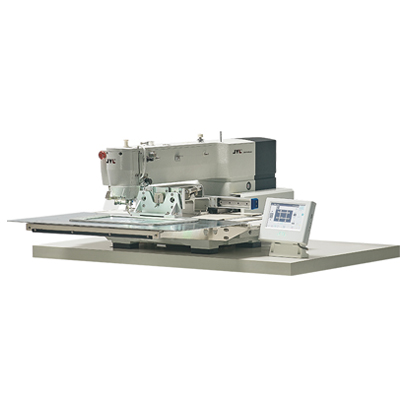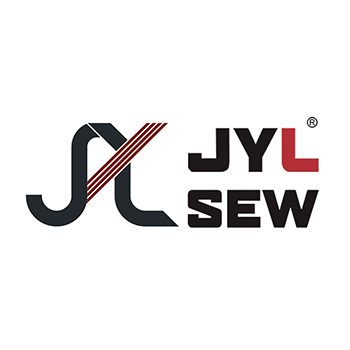In the fast-paced world of apparel manufacturing, staying competitive and efficient is key to success. One of the most impactful innovations in recent years has been the development of Programmable Sewing Machines. These advanced machines have transformed the garment industry by improving manufacturing efficiency, increasing output, and reducing labor costs, all while maintaining high levels of quality and consistency. This article delves into how programmable sewing machines are revolutionizing productivity in the apparel sector.

1. Increased Output and Faster Production Rates
One of the most significant advantages of programmable Sewing Machines is their ability to significantly increase output. Traditional sewing machines often require manual adjustments, repetitive tasks, and constant operator supervision. Programmable machines, however, automate many of these processes, allowing for faster production cycles.
These machines can store multiple sewing patterns and commands, enabling operators to simply select a program to run, rather than adjusting settings manually for each garment. Additionally, programmable machines can operate at higher speeds than manual models, processing large batches of garments in a shorter period. This increased efficiency helps manufacturers meet the rising demand for fast fashion and large production orders, reducing lead times and improving turnaround rates.
2. Reduced Labor Costs and Human Error
In garment factories, labor costs make up a significant portion of overall production expenses. Programmable Sewing Machines help reduce these costs by automating much of the sewing process. Once programmed, these machines require minimal operator intervention, which means fewer workers are needed on the production floor. This leads to savings in wages, as well as in training costs, as fewer workers need to be trained on the intricate details of machine operation.
Moreover, by automating tasks that were previously manually performed, programmable sewing machines minimize human error. Manual machines are more prone to operator mistakes, such as uneven stitching, incorrect threading, or inconsistent tension, which can slow production and lead to costly rework. Programmable sewing machines offer greater precision, ensuring that every stitch is uniform and consistent, which leads to fewer defects and less material waste.
3. Improved Consistency and Product Quality
Maintaining high product quality is essential in the competitive apparel industry. Programmable sewing machines contribute significantly to this by ensuring uniformity in every piece produced. The ability to program exact stitch patterns and settings means that each garment is sewn with the same precision and quality as the last, reducing variations that might occur with manual stitching.
This consistency is especially important in mass production runs, where customers expect the same level of quality in each item. Programmable machines can produce thousands of identical garments with the same stitch precision, even for complex designs or intricate patterns. This consistency not only satisfies customer expectations but also enhances the manufacturer’s reputation for delivering high-quality products.
4. Flexibility and Customization
While speed and consistency are crucial, the ability to easily adapt to new designs is just as important in the apparel industry. Programmable sewing machines are incredibly versatile, allowing manufacturers to quickly switch between different garment styles and stitch patterns with minimal downtime. This flexibility enables manufacturers to handle a diverse range of garment types, from basic shirts to intricate embroidered dresses, without the need for extensive reconfiguration or equipment changes.
Furthermore, these machines support customization options, allowing for unique designs, embroidery, and personalized stitching to be added with ease. This flexibility is crucial in today’s market, where customers are increasingly looking for personalized or one-of-a-kind products. Manufacturers can efficiently produce customized garments without sacrificing speed or quality, giving them a competitive edge in the market.
5. Reduced Material Waste
Sustainability is becoming an increasingly important consideration in the apparel industry. Programmable sewing machines contribute to reducing material waste by improving precision. Since these machines are highly accurate, they are less likely to create excess scrap or off-cuts, which is a common issue in traditional sewing. The consistent stitching pattern also minimizes the need for rework or adjustments that could lead to fabric waste.
Additionally, programmable machines can help optimize the cutting process by aligning fabric more efficiently, which reduces the amount of leftover material. By improving both stitching accuracy and fabric utilization, programmable sewing machines contribute to a more sustainable production process, which is important for meeting consumer demands for eco-friendly products.
6. Predictive Maintenance and Longer Machine Life
Another way programmable sewing machines enhance productivity is through their ability to predict and prevent mechanical issues. Many modern programmable machines are equipped with sensors that monitor their performance and alert operators when maintenance is needed. This predictive maintenance feature helps prevent unexpected breakdowns that could halt production and cause costly delays.
By addressing issues before they become serious problems, manufacturers can ensure a smoother production flow and extend the lifespan of their equipment. This not only reduces downtime but also minimizes repair costs, leading to long-term cost savings.
7. Integration with Other Automation Systems
Programmable sewing machines can be integrated with other automated systems in the production line, creating a more streamlined and efficient workflow. For example, machines can communicate with fabric-cutting systems or automated quality control stations, which reduces the need for manual intervention and ensures that every garment moves seamlessly through the production process.
This integration creates a "smart" manufacturing environment, where each machine operates in coordination with others to maximize efficiency, speed, and accuracy. This interconnectedness allows manufacturers to maintain high production rates while optimizing every aspect of the production process, from fabric cutting to final inspection.
Programmable sewing machines have become a game-changer in the apparel industry, offering a wide range of benefits that enhance productivity and competitiveness. By increasing output, reducing labor costs, improving consistency, and providing flexibility, these machines are helping manufacturers meet the demands of the fast-paced fashion industry. Additionally, their precision, ability to reduce material waste, and contribution to sustainability further solidify their value in modern textile production.
As the industry continues to evolve, the role of programmable sewing machines will only grow, helping businesses streamline operations and stay ahead of market trends while ensuring high-quality products.




